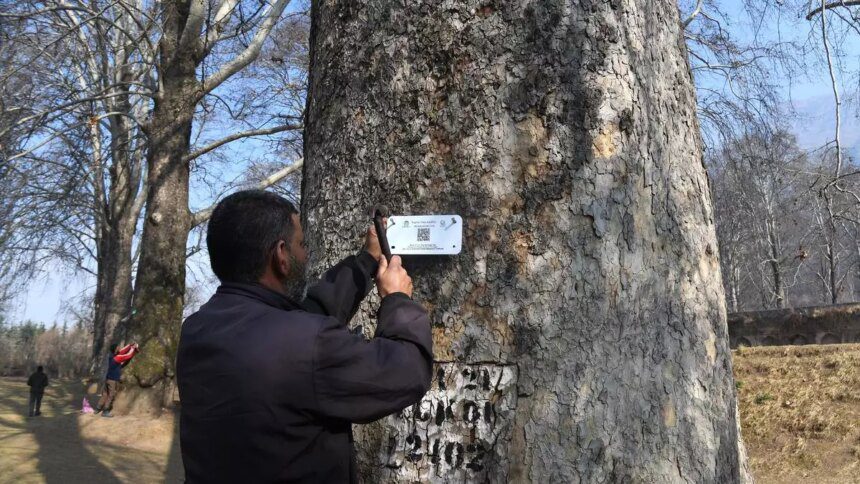The magnificent Chinar trees of Jammu and Kashmir, locally referred to as boonyi, have recently been assigned unique identification numbers in an innovative initiative by the J&K Forest Department and the J&K Forest Research Institute (JKFI). This project aims to document and conserve these heritage trees, which have significantly declined in number over recent decades. Each Chinar tree now displays a digital plate featuring a QR code, which, when scanned, provides detailed information about the tree.
Launched in 2021, this initiative has successfully geo-tagged a total of 28,560 Chinar trees to create an extensive database. Official data shows that between 2021 and 2022, 8,000 trees were assigned unique Tree Aadhaar numbers, followed by another 10,000 in the year 2022-23. During the current fiscal year, an additional 10,000 trees are in the process of being geo-tagged.
Syed Tariq, the Project Coordinator at the Forest Research Institute, shared that the digital plates are attached using springs rather than nails, ensuring that they do not penetrate deeper into the bark as the trees grow. A quick scan of the QR code reveals vital information, including the tree’s location, height, girth, canopy, health status, ecological threats, and the presence of pests.
The Chinar tree, a prominent deciduous species from the Platanaceae family, can reach heights of up to 30 meters. Known for its striking golden and red foliage during the winter months, the Chinar is an integral part of the region’s rich cultural heritage. However, the population of Chinar trees has seen a substantial decline over the last few decades.
In response to this troubling trend, the government implemented a ban on the felling and lopping of Chinar trees in 2009. In 2019, further restrictions were placed on attaching hoardings to these cherished trees. Tariq mentioned plans to develop a comprehensive Chinar Atlas as part of their ongoing efforts to preserve this iconic species, including those trees located in restricted areas.










